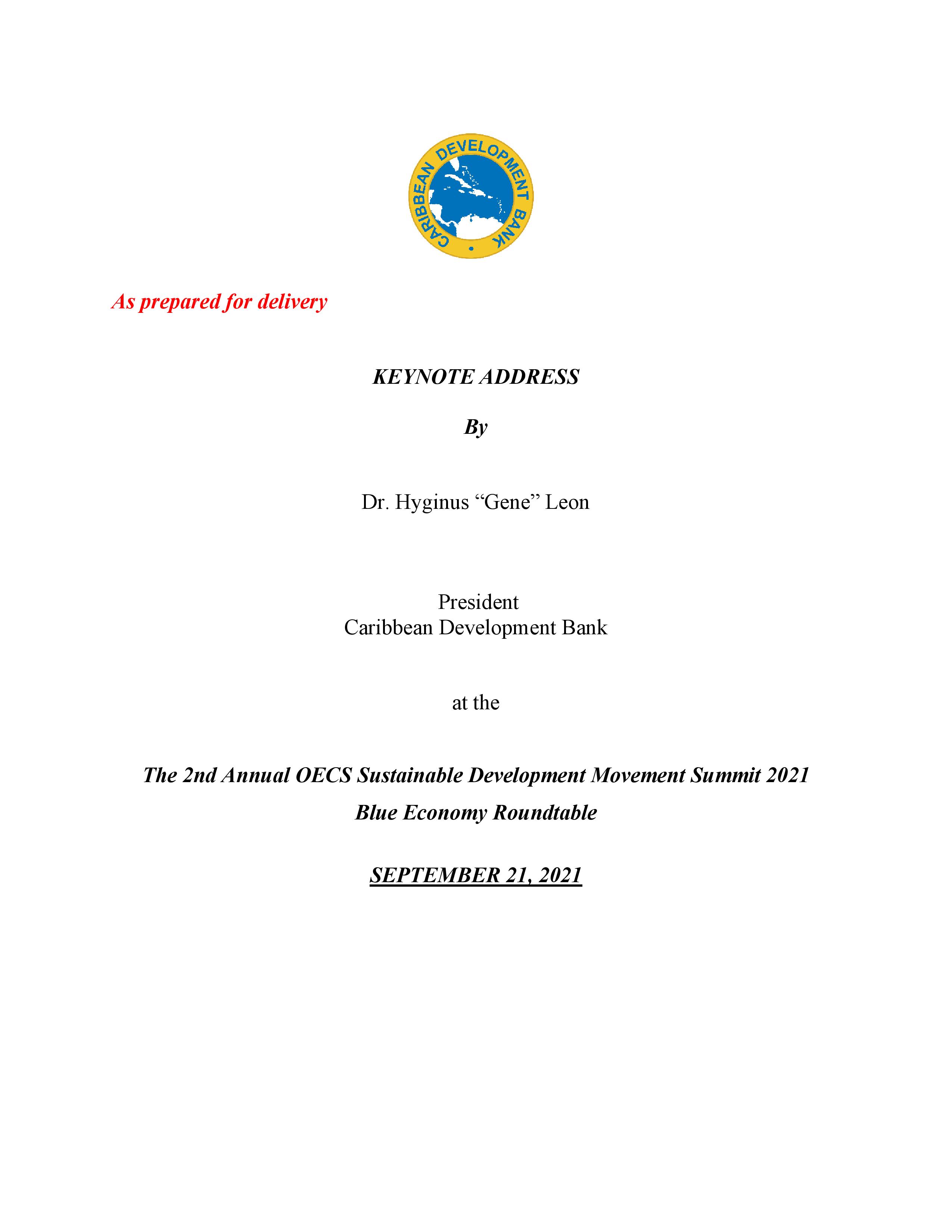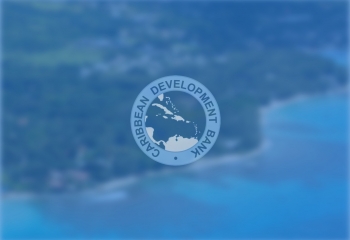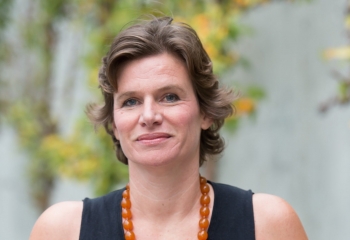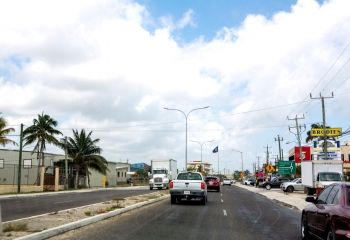Keynote address at the 2nd Annual OECS Sustainable Development Movement Summit 2021 - Blue Economy Roundtable
A pleasant welcome to everyone in attendance today, and to those revisiting recordings at some later time. It is a pleasure to be asked to deliver this address as this is a discussion that the region cannot afford to delay. I thank the organisers of this event for providing me with the opportunity to highlight the role that the blue economy can play in the region’s transition to more resilient and innovative societies.
The acute loss of livelihoods, resulting from the COVID-19 pandemic, has placed squarely into focus the need to reposition our economies. The year 2020 was marked by steep declines – double-digit in many instances – reflecting the heavy export concentration that bedevils the Region. How can we rebuild going forward? My key message is that we need to build resilience across all dimensions of development -- environmental, production, social, financial, and institutional – if we are going to exploit the full potential of the region’s resources.
The blue economy represents a significant component of these resources and has the potential to deliver huge dividends with respect to production resilience. However, delivering those dividends depends on resilience building across the other development dimensions. Whichever way we phrase it, let us remember that the ocean and its assets represent a resource that (in aggregate) is 5 times the size of the of our land acreage and impacts more than 70% of our population. Therefore, what I propose to do in this address is to define the blue economy and highlight its potential. I will also propose routes through which its full potential can be realised, speaking to the role of the unbounded imagination, the policy framework, and the financial support needed to deliver on its promise.
It is fitting that this discussion is initiated within the Organisation of Eastern Caribbean States (OECS) region – a regional amalgamation within the Caribbean Community (CARICOM) with the objective of a shared economic space for enhanced growth, social inclusion, and protection of the environment of its members. What I hope becomes evident is that the Blue Economy Agenda is a means to improve the dimensions of resilience in a sustainable and inclusive manner. Indeed, it is a development path that promises immediate and sustainable economic and social gains and, importantly, induces reforms that will make for a more resilient ecosystem.
Let us anchor today’s discussions in the realisation that the Blue Economy is not a competing strategy for development but an essential element in building more resilient societies. What makes the blue economy so suitable for the Caribbean is not simply the focus on the oceans – our most abundant resource – but also the emphasis on applying innovative and well-designed strategies to a resource that can expand the Region’s production possibility frontier. To contextualise, in 2019, CDB studied the direct impacts of the Blue Economy within the Jamaican economy; the findings showed that the Blue Economy contributed 6.9% growth in value added – this excludes much of the indirect and intangible gains of the Blue Economy, particularly in tourism and recreation services. The study further showed strong linkages among industries where strategies to increase value-added in one blue industry has the potential to increase overall demand in other sectors by as much as a full percentage point of Gross Domestic Product (GDP). This is significant considering the study was limited in the ability to delineate growth based on second round demands; the rate could be markedly higher. In fact, the Blue Economy provides a strong multiplier for the Region, if we consider the potential gains it brings throughout the total ecosystem – either through efficiency gains in existing industries or as a source of new-growth opportunities.
In this regard, the Blue Economy, just like its coloured counterparts (green and orange) is meant to advance the development agenda by focusing efforts in areas where we have comparative advantage and fostering greater linkages throughout the economic system. The aggregation of ocean-related activities under this umbrella of blue industrial growth, speaks to either improving existing and well-developed industries or creating the potential for growth in emerging and new industries to the Region. However, achieving these benefits and implementing the blue growth agenda requires faster, deeper, and wider adoption of modern technologies, more coordinated and collaborative regional institutions, and deeper levels of regional integration. We are speaking of a transition that is encompassing and requires a systemic approach to development that is grounded with strong knowledge creation, innovation, and digital transformation.
So, what needs to be done?
First, as we reimagine our economies, let us consider that to become resilient, we must address existing structural deficiencies that have too long defined our actions. Let me ask: What has gotten us here? Was it the global financial or the recent health crisis and the resulting loss of lives and livelihoods? Was it purely the secondary trade shocks of the COVID-19 pandemic and loss of markets for the Region? Was it the recent natural hazard events within the OECS?
In my view, and one shared by many, those events mentioned before were the impetus for our current situation but the reasons we are here and, may be here again, is more entrenched and more pervasive than we see in the headlines. Decades of low productivity, widening infrastructure gaps, migration of skilled persons, and the perennial use of funds to replace capital after natural hazards are the underlying conditions (co-morbidities) that have led to serious economic and social distress. Our resilience has been tested by structural vulnerabilities that exist in our ecosystem.
Second, I want us to think about the ocean and its resources as a developing industrial chain that currently has economic, social, and institutional actors already working harmoniously but evolving towards becoming more integrated and interconnected. We must recognise the vast knowledge that still has to be accumulated in this area and presented in a supportive and explanatory model for development. Think about the need to drive Innovation in this area through an amplified research and development agenda and with targeted and strategic Strategies for education, digital adoption, and international/regional/country-wide partnerships. The beauty of this approach to developing the blue economy industrial chain is that it will strengthen a wide cross section of institutions and have benefits throughout the social fabric of the implementing economies. The approach can easily be adapted to other industries and immediately ticks the resilience needle by (1) increasing the country’s productive capacity, (2) strengthening the institutions; (3) making better use of and attracting more financial investments; (4) providing opportunities to coastal communities, inclusive of the poor and vulnerable; and (5) protecting and sustainably using our largest environmental resource.
As such, let us reimagine a Caribbean that addresses our structural impediments. In doing so, I want us to address two questions that will determine the success of our diversification and resilience building strategy:
1. What can we do differently?
2. What can we do that is different?
What can we do differently?
Permit me to borrow a line from my address at the recent Inaugural Distinguished Owen Arthur Memorial Lecture where I summarised Professor Arthur’s reimagined vision for the Region as embodying “innovation and integration, founded on evidenced-based decision creation and facilitated by digital transformation”. This is the premise on which I want us to move forward. Let us remember that the Blue Economy is the part of a wider ecosystem that targets the sustainable use of the ocean in a manner that improves all five dimensions of resilience in the Caribbean.
Regional economies already gain direct benefits from the ocean through economic and subsistence activities, such as fishing, marine and coastal tourism services, marine transportation, and related services. Indirect benefits redound through the economic cycle as maritime activities facilitate much of the trade and tourism activities taking place among our countries. The traditional maritime industries such as trade, agriculture, fishing and transport, provide an impulse to growth and development across the Region and facilitate engagement with poor and vulnerable groups searching for opportunities. So, our focus now is about how we can more easily access and more sustainably use these resources.
Let me provide a few examples, to highlight some potential gains in the future:
Fishing – The fishing industry, while small in its economic contribution, remains a mainstay for many poor and vulnerable communities in the Region. Small-scale fisheries provide many coastal communities with income, employment, and food security. The fisheries sector of CARICOM countries provides direct employment for almost 116,000 persons and contributes more than 2% of regional GDP. The Food and Agriculture Organisation estimates the number of persons employed in fisheries (inclusive of satellite industries such as boat construction, net repair, and fish processing) to be close to 200,000 persons. Much of these small fisherman and persons providing services, are small and micro enterprises comprised of the poor and vulnerable population of coastal communities.
Now imagine a future Caribbean where persons engaged in fishing are properly trained in the use of modern technologies and have at their disposal an integrated market information system. Use of satellite imagery, geo-tagging and “crowd-sourcing” applications can reduce the resources expended per catch. Think about a system that allows a fisher to log on and identify crowded fishing zones in real time (almost like having a ‘waze’ app at sea) and see reports on the fish catch from the active members. Fisherfolk will be better able to choose the zones they target for catch. Now take this a step further, once the fishing is completed, and the fisherfolk set course for the shore they can immediately upload the catch into a central information system that is also used by customers. The ‘landing site’ then becomes virtual where the sale takes place before the anchor is laid. This use of the technology can increase efficiency and reduce some of the risks of engaging in this industry such as weak market linkages, storage and transportation costs, and security issues.
Marine and Coastal Tourism, and Trade and Transportation – The tourism industry is one of the largest employers and contributors to economic growth throughout the Region. Added to this, is the importance of tourism to government revenues and foreign direct investment. Caribbean tourism attracts approximately 22.7 million visitors annually, and in 2014 visitors-spend in the Region was equivalent to more than 10% of regional GDP. At the same time, the geographic makeup of the Region’s economies necessitates sea transportation for international trade, accounting for 90% of all merchandise trade. In its 2016 report on Caribbean ports, CDB identified growth potential in the regional gateway container demand, but untapping this growth requires investment in improving infrastructure and the technical capacity of regional agencies. Improvements through the digital transformation of port operations, and an enabling and facilitating environment, can further increase these potential gains.
Imagine the vast improvement our regional markets can derive if a traveller were able to “backpack” across the Caribbean. Let us use the technology and green, reliable modes of sea transport that can: (1) be planet-friendly, while reducing the costs associated with regional travel; (2) make the Caribbean a destination experience, where cruise ships and individual travel is simplified and connected; and (3) use the technology to allow immigration, health, and other public systems to speak to each other. By reducing the burden and the costs of intra-regional travel, we can increase the tourism numbers and the visitor spend. Also, a more connected region enables intra-industry diversification, where we still benefit from our traditional tourist industry, but expand to new markets and a new type of tourist.
What can we do (that is) different?
What potential has not been exploited?
Marine Renewable Energy – The Region is dependent on fossil fuels for most of its energy needs. The over-reliance on imported fossil fuel, in the form of diesel, to power their economies – i.e., produce electricity, for transportation, industry, and cooking services makes us more vulnerable to price shocks and disruptions in the international oil markets, and the transmission of such shocks to the rest of the economy tends to be immediate and acute. Further, the unit electricity prices are among the highest in the world because of the small and isolated nature of the markets.
CDB Borrowing Member Countries (BMCs) are pursuing the development of renewable energy options both as part of their national energy policies and climate resilience strategies. In line with its Energy Sector Policy and Strategy, CDB continues to support member countries by providing resources for technical assistance to strengthen capacity, establish enabling frameworks, and for renewable energy investment projects.
Although solar energy and wind resources are usually of high-quality, conflicts arise sometimes with other objectives and in competition for land space. With the area of our countries’ Exclusive Economic Zone being multiple times the area of the landmass, exploring opportunities for using this marine space for the generation of renewable energy is essential.
To this end, CDB in collaboration with the Inter-American Development Bank are studying the potential for marine renewable energy deployment in the Caribbean by matching resource potential with technical and commercial readiness of specific technologies, using existing data to provide ‘Locational Guidance’ at a country-by-country level. Today, wave and tidal technologies are pre-commercial and still under development but have the potential to contribute to our long-term energy mix. Already, fixed and floating off-shore wind facilities show a strong match in terms of technological readiness, resource quality, and cost of electricity potential, highlighting the cause for adoption and promotion. As such, CDB is in the process of developing a marine renewable energy strategy to explore with our BMCs the most viable approaches to developing Marine Renewable Energy.
The Inter-American Development Bank estimates the Region’s renewable energy potential to be 20 times the potential energy demand. This recognition led to the development of a Community Energy Policy in 2013 by CARICOM and provides many opportunities for industry development. Indeed, and futuristically for the OECS region, this offers a solution that can increase total value-added for our economies. After decades of structural shocks, dependence of high-cost energy imports, and consequent low-growth, imagine the economic, social, and environmental gains of making the OECS region a net exporter of energy generated from indigenous renewable resources, becoming a beacon for the use of sustainable energy sources! Indeed, more affordable, cleaner, and abundant energy immediately adds visibility to the Caribbean’s resilience drive.
I challenge the OECS region to not see itself going this alone, I challenge you to: become the best practice in regional cooperation, with specific reference to an OECS - One Energy Grid where we apply modern technologies, research and innovation (such as the marine renewable we discussed) to produce energy for member countries; .and make the Region, not just country A or B, but an integrated renewable grid, showcasing the power of regional cooperation. The private sector has told us on many occasions that they are willing to invest within the Region. Can we design and disseminate a warehouse of near-ready-to-go bankable, sustainable projects that can benefit the entire ecosystem and strengthen our financial, economic, and social fabric? Imagine the benefits of reducing our vulnerability to exogenous energy markets and the related price shocks, reducing our dependence and demand for an imported commodity; imagine the higher value added from using our limited foreign exchange to produce further along the value chain opposed to purchasing the most basic of raw materials; imagine even a future where hurricanes are a welcome nuisance, because we harnessed wind and water momentum into energy that was storable and capable of distribution.
The Big Picture: How do we unlock our Potential?
How do we reimagine our regional economies to become more resilient and to enhance the lives and livelihoods of our populations? How do we reposition ourselves in the global marketplace with sustainable and inclusive opportunities for ourselves? How do we reduce our dependence on others and take charge of our tomorrow? These questions require a more holistic approach to development within our ecosystem where, to apply Newton’s Third Law, every action has an equal and opposite reaction. The actions of all economic agents: the government, household, industry, and academia will create reactions throughout the ecosystem. What we need is harmonious, coordinated, and synergistic motion where each agent complements the other to achieve the desired objectives.
I would like to take this opportunity to propose the idea of making the Caribbean One Blue Space. Yes, the Caribbean Single Market Economy has not developed as quickly and as naturally as we hoped but we may yet have an opportunity at successfully creating a One Caribbean initiative. Let us reimagine blue activities as a regional public good; it is not only about transforming the tools but also about transforming the culture. The modern culture must be one where all agents of our ecosystem come together and complement each other’s activities.
Starting with the education system – encompassing early childhood to university and beyond – let it be the think-tank and the conduit for new research and the driver of innovation. Here I see our academic institutions bridging the gap between technology and activity, being that source of imagination and the enabler of transformation. Then, as research and innovation develop ideas and solutions, facilitate the private sector and the international development partners in providing the financing and technical support to take products to market. The emerging system which will reward ideas, encourage risk, and promote diversification needs to be supported by an enabling environment. The OECS is well placed with its movement of labour, existing communal institutions, and shared economic and social policies and governance frameworks to be a catalyst for forming a One Blue Caribbean Experience. Let us build on current efforts and accelerate our development through the marketing of the Region with one voice.
Now imagine the Region as a training and innovation hub for pre-commercial marine renewable energy technologies. Sir Arthur Lewis promoted industrialisation by invitation with new employment opportunities off the land. Can we reimagine promoting industrialisation of knowledge and the net export opportunities that can arise from our maritime space? Can we imaging a region where we are the innovation hub for multinational corporations to advance the marine renewable energy agenda, one where we are first off, the block with emerging technologies? Imagine the attractiveness of engaging international players based on our combined economic resources (marine and land). Wouldn’t the Region demonstrate to the world that we are, in fact, more than the sum of our parts?
I thank you.




